What is the Golden Ratio?
The Golden Ratio is a relationship between two numbers that are next to each other in the Fibonacci sequence. When you divide the larger one by the smaller one, the answer is something close to Phi. The further you go along the Fibonacci Sequence, the closer the answers get to Phi. But the answer will never equal Phi exactly.
That’s because Phi cannot be written as a fraction. It’s irrational!

(? 5 -1)/2 = PHI = 1.618… and that is the most irrational number!

The Golden Section
When you draw squares whose sides have lengths corresponding to consecutive Fibonacci numbers.
The Golden Spiral
Draw a smooth curve passing through the outer corners of these squares.

Natural seeds distribution in a sunflower: How it happens
When a plant such as a sunflower grows, it produces seeds at the center of the flower and these push the other seeds outwards.
Each seed settles into a location that turns out to have a specific constant angle of rotation relative to the previous seed.

The Golden Ratio
Looking at these two diagrams:

There are 21 spiral arms curving to the right and 34 spiral arms curving to the left.
The spiral arms to the left and to the right are always two successive numbers of the Fibonacci sequence
These two numbers are successive numbers in the Fibonacci sequence.
(1,2,3,5,8,13,21,34…)
Therefore, seeds in a sunflower follow the pattern of the Fibonacci sequence.
Seed distribution
Pseudocode – Logic

Initial results, intent of exploration, hypothesis on parameter impact on results
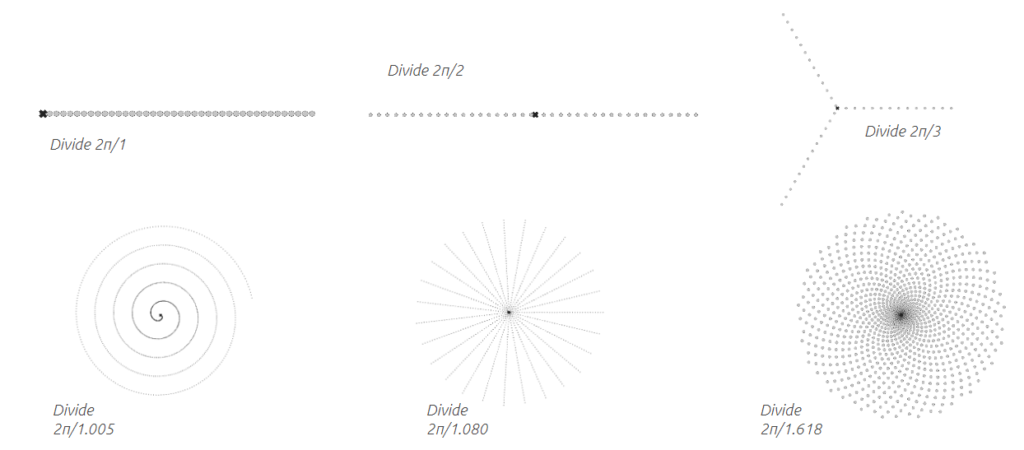
Grasshopper Code
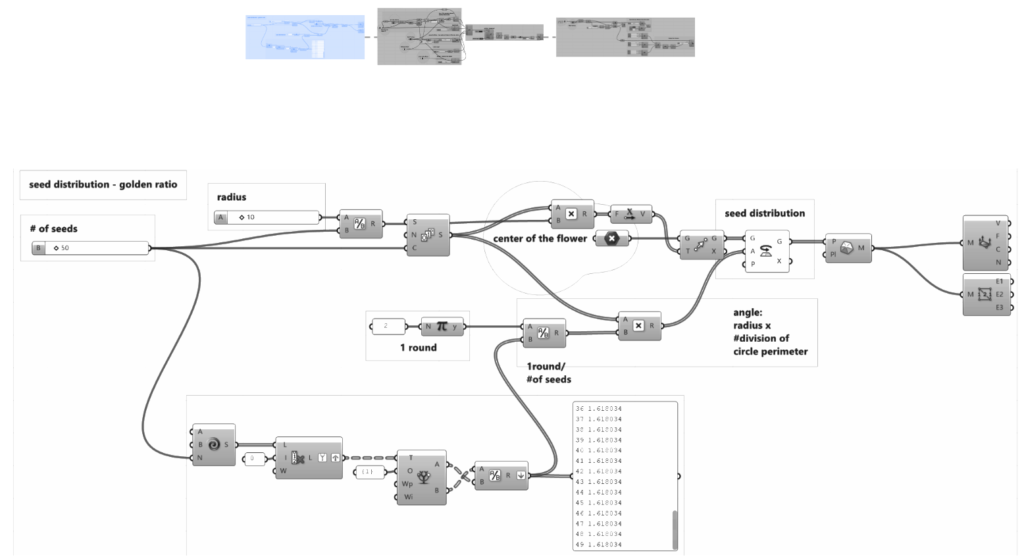
Exploration development – Parameters and Variables
Elements that define how the seed distribution perform
Growing one seed further away in the square root distance of its number on the Fibonacci sequence and rotated 137,5 degrees from the previous seed.
Boundary conditions that change the performance results
- The space available for the seeds to grow
- Impact of another growing elements
Representation graphically and numerically
- Amount of strength applied to the attractor that is set.
- Different colors to show graphically the points that are closer or further away from the attractor.
Proposal – Boundary Condition chosen to be explored: Impact of Growing Element + Wind

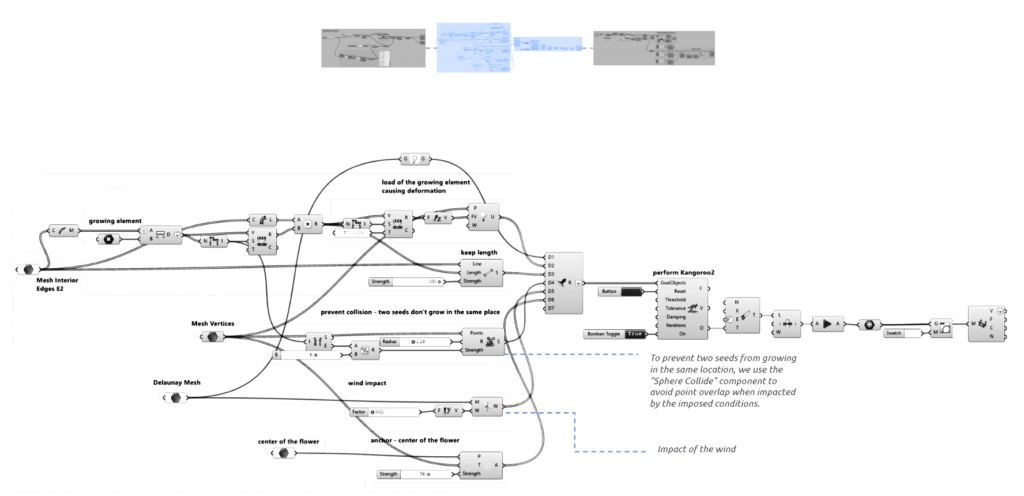
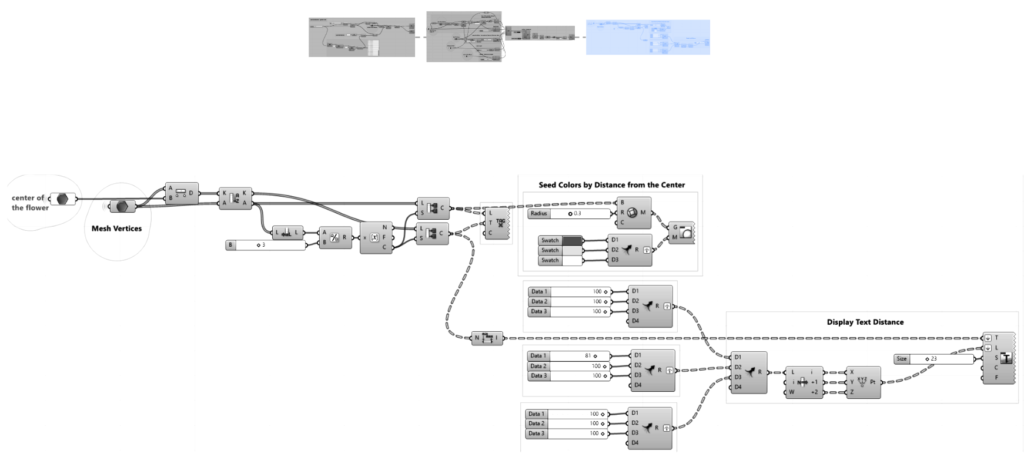

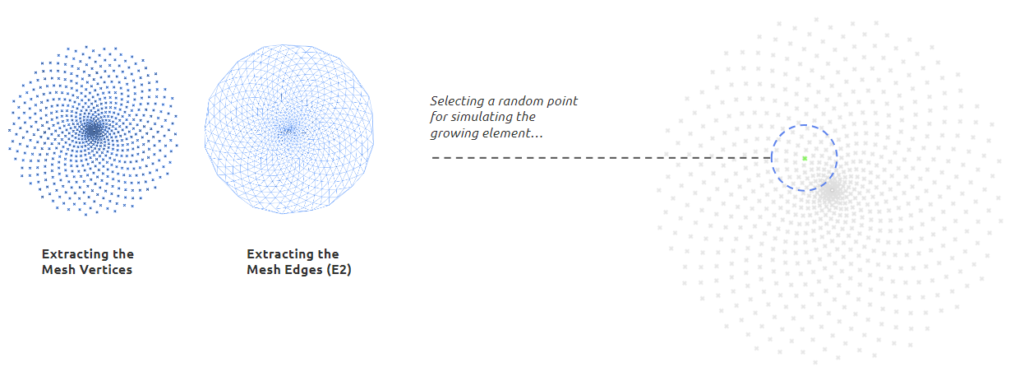
The center was established as the anchoring point, following the logic that it is from it that the other seeds grow, and it is the closest point to the stem of the plant that will support the growing flower.
The applied load aims to influence the natural behavior of seed distribution, mimicking the impact of any growing element of the flower, such as another flower or leaf that grows simultaneously with it, generating weight in a specific direction. A random point within the flower’s growth area was chosen for this purpose.
Simulation of the wind impact on seed distribution. An arbitrary direction was chosen.
A constraint was created to prevent seeds from growing in the same spot, avoiding overlaps, as even when influenced by variables, two or more seeds never grow in the same location.
The membrane aims to illustrate the final shape achieved by the seeds after the growth of a flower influenced by the variables of wind and the stipulated growing element.
The colors represent the distance that the seed is from the center of the flower, indicating the varying levels of impact that the variables had on each seed. Red signifies seeds that were least affected, oranges represent seeds that were displaced to intermediate levels, while yellow is relative to seeds that, in the final configuration, positioned themselves in the outermost and most vulnerable part of the developed flower.

The connections between the seeds aim to illustrate the order of growth and final distribution of the simulation. It is possible to identify that the spirals follow opposite directions, and as demonstrated in the code, we ensure that the proportion follows the golden ratio, mimicking a development behavior present in nature.

Analysis of the Impact of Wind and a Selected Growing Element at Different Configurations
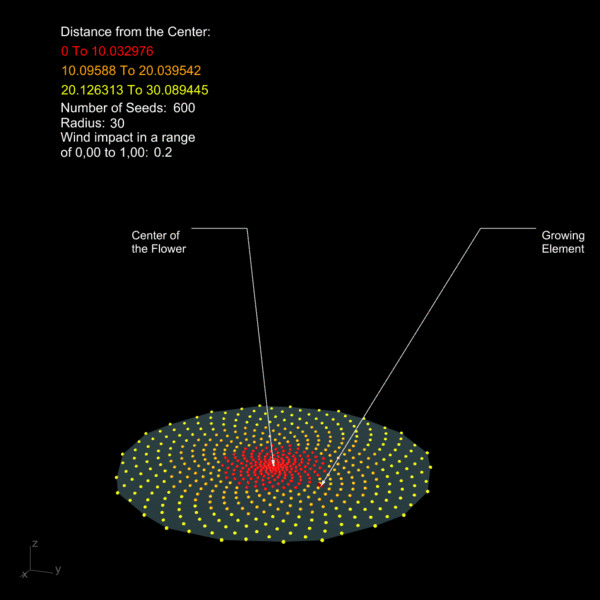

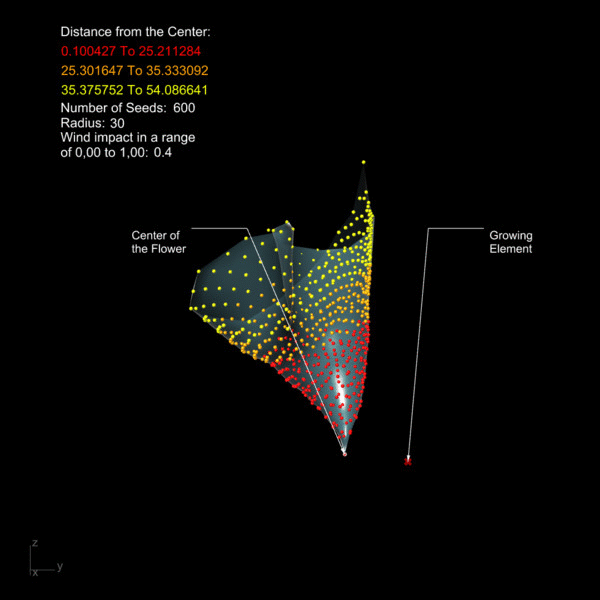

Conclusion and Future Direction
Through this study, it is possible to construct a range of sizes following the golden ratio and understand how this growth would occur when impacted by external factors such as wind and a load-bearing and deformative element, as represented by the growing element.
By analyzing seed distribution we can strategically position membrane connection elements and apply this principle to other structural components.
This methodology informs the design and placement of connection points across various elements, leveraging the efficiency of the arrangement around a central point, simultaneously enhancing stability and aesthetic harmony throughout the entire system.
Also, because of the study is possible to analyze the importance of anchor points and understand the final shapes and structural connections under the influence of external forces.
It brings the possibility to explore design for resilient structures that can adapt and respond effectively to dynamic environmental
conditions.

